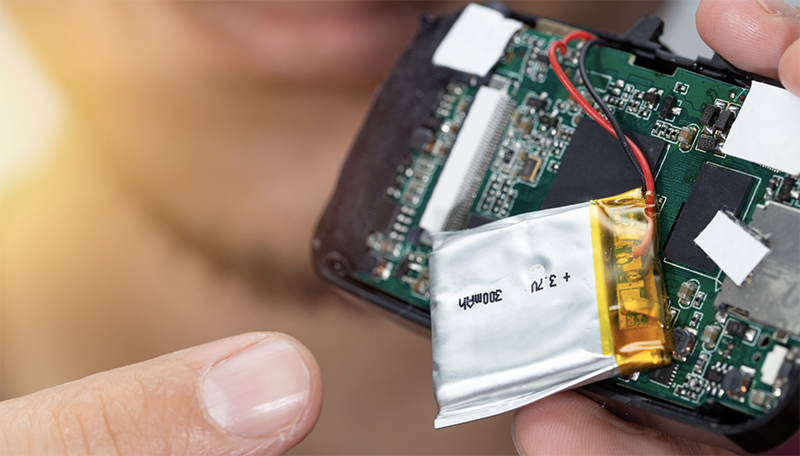Now more than ever, the management of battery capacity is a key factor in delivering a positive or negative experience with portable electronic devices, and ultimately the value your customers derive from them. Running out of battery power and losing access to a battery-powered device can result in a range of frustration — from significant inconvenience to full-blown destruction of key business value. In this blog post, we’re going to talk about essential considerations for how battery life is managed in portable electronic devices.
Over the years, Appareo has worked with many different battery chemistries — from alkaline batteries (e.g. “AA” or “AAA” batteries) that we use in common household devices such as remotes and toys, to specialized chemistries like lithium thionyl chloride for extreme environments. Our focus in this blog post is going to be on lithium-ion polymer batteries, the common battery chemistry used for rechargeable cells.
How Electronics Consumers Can Improve Total Battery Life
Tip 1: Keep a battery well charged and charge it between uses, even if (especially if) you didn’t use most of the battery.
The first reason batteries age and hold less charge is due to the number of cycles. What constitutes a “cycle?” There’s no consensus in the battery community, but in general, a cycle is the function of taking a charged battery, consuming some of its energy, and then replacing that energy by recharging the battery. When less of the battery is consumed, it’s less stress on the battery. Therefore, it’s better for you to recharge a battery after consuming a little bit, as compared to draining the battery completely before recharging.

Tip 2: Keep your battery out of hot environments, especially when being stored for longer periods of time.
Another reason batteries permanently lose capacity is due to heat stress. If a battery is exposed to high temps (hotter than 86°F) for extended periods of time, the battery will permanently lose charge. This commonly happens with portable electronic devices that are left in hot cars for hours or days at a time, where high temperatures will stress the battery and destroy its potential.
How Manufacturers Can Improve Total Battery Life
There are reasons that battery life may be diminished that aren’t in the control of the consumer, but instead have to do with the way electronics are specified and implemented. When design engineering a portable electronic device, manufacturers should consider how long customers expect the battery to last, and how much time customers expect to be able to use the device on a charge. One of the ways manufacturers can affect battery performance is by controlling the capacity the battery is operated at. Controlling the capacity involves picking a range that creates the longest battery life, and only operating the battery in that range (e.g. between 25% and 85%). Most batteries will have a longer life in this charge condition than if the battery is operated persistently between 50% and 100% capacity, for example.
A second way manufacturers can have control in this area involves managing the voltage at which the battery is charged. Lowering the charging voltage prevents the battery from getting fully recharged. For example, most batteries are charged at 4.2V. If the charge voltage is lowered to 4.0V, customers may only be able to charge the battery to about 75% of its rated capacity, leaving 25% of the potential battery life on the table. Doing this will increase the number of cycles the battery can withstand by a factor of 2-3 (e.g. from 500 to 1,500 cycles).
Either one, or both, of these approaches will sacrifice total capacity of the battery to improve the life of the battery, and in some applications may be worth the tradeoff.
 Christopher Horne – Director, Electrical and Electronics Design
Christopher Horne – Director, Electrical and Electronics Design

